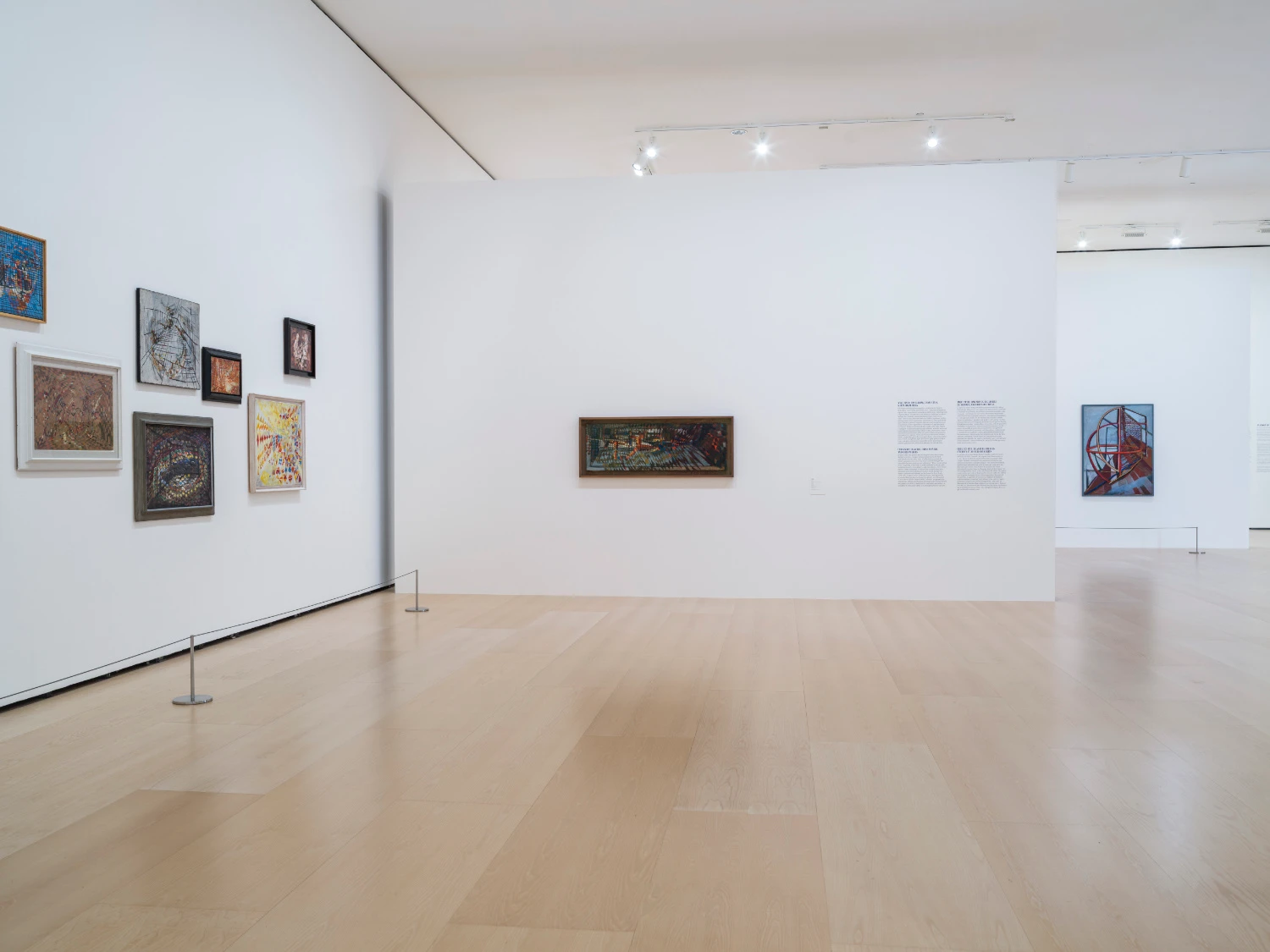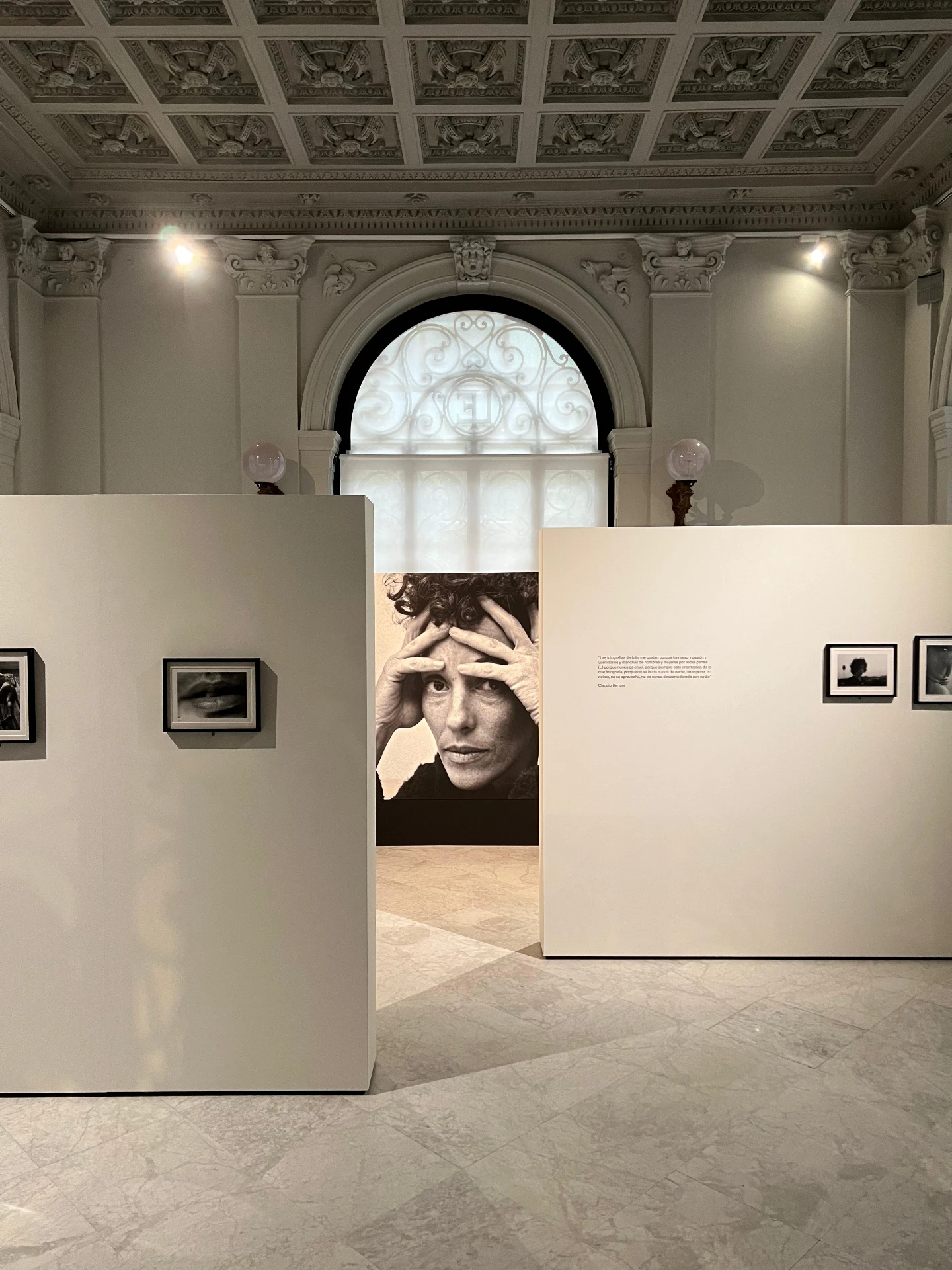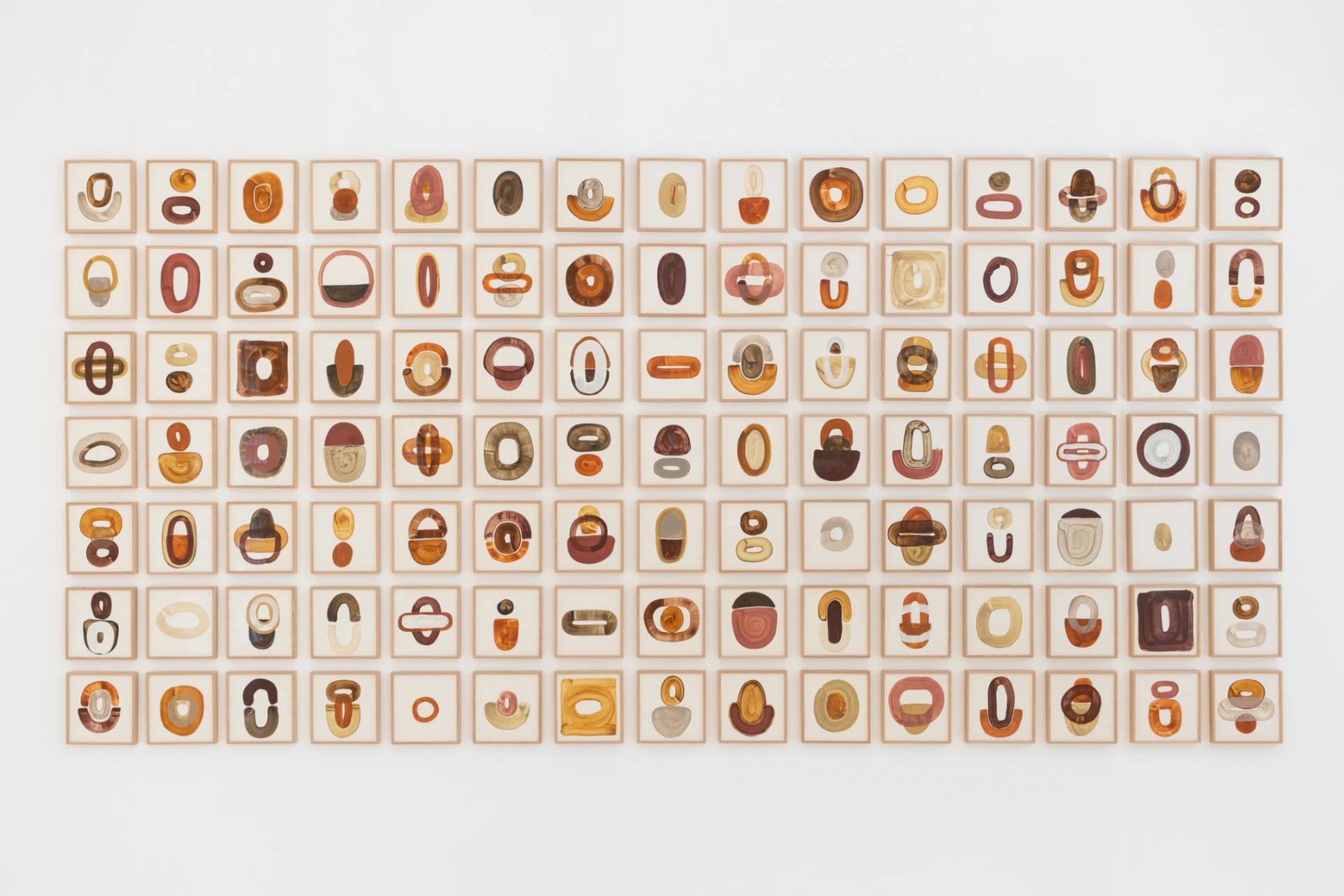article
What Looks at Us, at MAAT
What Looks At Us is the title of the first exhibition by Miriam Cahn (Basel, b. 1949), a prominent figure in the contemporary art scene, in Portugal. Hosted by MAAT, following her previous presentation at the Palais de Tokyo (Paris), this exhibition brings together a wide selection of installations, videos, watercolors, and oil paintings. These works span different periods of her career, building a journey through the themes that punctuate her artistic imagination: the body, gender-based violence, migration crises, and armed conflicts.
He didn’t need much, two flickers would be enough, two eyes, and there they were.
(The Cave, by José Saramago)
We are thrown into the exhibition without any prior framing. But its title seems to be immediately clarified by the paintings that line the corridor leading to the exhibition space. Grouped under the same title—a gesture that conveys the artist's compulsion to consider her works as a whole—they reveal her own naked body. In a vigorous, almost childlike, and swiftly executed line, blurred figures emerge, almost ghostly presences that stare back at us and stop us at the entrance to the exhibition.
What looks at us? They are the artist's eyes, sparkling, round, and horrified. But the exhibition is not only about the bodies that gaze upon us. What looks at us are also the political concerns that permeate these canvases. Influenced by the feminist reflections of the 1970s and 1980s, Miriam Cahn early on adopted a radical approach to the role and images associated with and imposed on women throughout art history. In this context, her paintings of female nudes stand out: bent, grotesque, floating bodies, with disfigured or covered faces. Representations of aging bodies multiply, but so do images of breastfeeding and childbirth—graphic, bloody, and, above all, absent from art history. It should be noted, however, that this absence is not accidental. It was after the Council of Trent, in the mid-16th century, that the Church began to condemn the representation of the female body in gestures of nourishment or pleasure, erasing the Madonna lactans, the figure of the Virgin breastfeeding, from Christian iconography. The female body, simultaneously sacred and an object of desire, was progressively censored, repressed, and disciplined. It is in this sense that one of the images in the exhibition—a body covered by a niqab, but with breasts and genitals exposed—becomes particularly incisive. This painting is a deliberate provocation that prompts reflection on the impositions that, in one way or another, fall upon these bodies. After all, women are obliged to cover themselves with a veil—but also, paradoxically, to remove it if so determined. A dual command regulates the woman's body: to hide or to expose itself, always in response to the gaze of others.
Miriam Cahn's bodies highlight a voyeuristic pleasure that almost always involves an erotic object subjected to the curious contemplation of the other. According to Laura Mulvey's Visual Pleasure and Narrative Cinema (1975)—an author who studied the influence of patriarchal society on the construction of classical Hollywood film production models—women often appear as passive objects to be looked at. It is the man, the bearer of vision, who is the active element, projecting his fantasies onto the representation of the female figure. But this typology of gaze cannot be indiscriminately applied to most social situations. In What Looks at Us, women do not offer themselves as objects of erotic contemplation. On the contrary, the female figures in Miriam Cahn's paintings reject the stereotypes of beauty designed to satisfy male pleasure and subvert the asymmetrical structure of the gaze. Underlying these works is a recognition of women as active elements of the gaze—a position that recalls, for example, the discussion surrounding Mary Cassatt's In the Loge (1878), where a woman, seated in a theater balcony, observes what is before her through a pair of binoculars without, however, returning her gaze. And while, on the one hand, this perspective may be excessively binary, it encourages us to recognize that it emerges in light of the feminist reflections of the time, framed within a situated personal and political experience. Ultimately, this interplay of gazes not only concerns the typology of the gaze in a patriarchal society, but also translates an inversion of the spectator's logic in the exhibition space—disturbed by the horrified faces staring at them and stripped of the passivity that was priorly attributed to them.
Throughout the exhibition, several sections address the imbalance in the distribution of power and violence, whether on an individual or collective scale. Early on, we encounter a series of watercolors depicting atomic mushroom clouds, functioning as a kind of anti-nuclear manifesto. The delicate color palette and transparency of the watercolors contrast with the brutality of the depicted subject—and it is precisely from this confrontation that their symbolic power emerges. Further on, in another room of the exhibition, we encounter a set of oil paintings and small and large-scale drawings that bring together images of warplanes, helicopters used during the Vietnam War, tanks, explosions, but also the gesture of punching, raping, and stomping—in essence, all objects and actions that could be understood as killing machines. These elements come together in constellations conceived by the artist herself in the exhibition space, revealing a continuity between her work and the assembly process, assumed here as an extension of her artistic practice.
The issue of collective violence resurfaces in her works on the Hamas attack, presented in the WEINENMÜSSEN section, and in the UNDASTELLAR room, where the focus is on migration, drownings in the Mediterranean, and the recent massacres in Ukraine. Born into a Jewish family, the artist draws on her traumatic experiences, which could contribute to a sometimes one-sided and flat perspective on geopolitical phenomena. Yet, this approach does not compromise the strength or relevance of her representations, which situate artistic practice at the center of critical commentary on contemporary times. In this regard, we draw attention to some paintings where we see bodies dragged, tied, floating (or drowning) against a blue background—a direct reference to the refugee crisis. The works, with their unfinished and gestural aesthetic, pastel tones and a lyricism that once again contrasts with the brutality of their content, recall Maria Helena Vieira da Silva's Les Noyés (1938), which—although using a darker color palette—also evokes this limbo between abandonment to imminent death and the struggle for survival.
Also in this room, we see Fuck Abstraction!, conceived after the circulation of images of the Bucha massacre (Ukraine) and reports of rapes perpetrated by Russian soldiers. The atrocity is sparsely detailed but still evident. The rapist's body—muscular, relentless, and faceless—appears above a smaller figure, a man kneeling with his hands tied. Previously exhibited at the Palais de Tokyo, this work was the subject of a series of interpretations that identified it as a representation of child abuse and called for its removal. For this reason, their presentation in this exhibition was accompanied by a clarification: the bodies do not refer to children, but to figures weakened by brutal force. The asymmetry in size is, in fact, a representation of the unequal distribution of power that confronts us with this underreported and historically silenced crime.
These figurative works contrast with the artist's more recent works, which she presents as the core of the exhibition. Arranged along a low-ceilinged corridor connecting two of the large rooms, we find a set of drawings with inscriptions in German. And if we mentioned earlier Fuck Abstraction!, which uses figuration to represent horror—even at a time when all her peers opted for a more abstract language—in this final phase of the work, the artist seems to contradict her trajectory, refusing to represent the human figure. Is this a refusal of aesthetic delight? I make the words of Carolina Novo, in “Sleep well, beast”, my own. Perhaps this refusal is the result of having learned, as a society, that there are things that should not be seen—at least not repeatedly—and that mediated representations of violence and human suffering have become one of the greatest traps ever invented. But this refusal comes too late. We are plunged into an abyss, and the images—those eyes that remain with us—seem burned into our retinas. There is an accumulated fatigue in them, as if the very possibility of looking had been corroded by the repetition of horror. These last drawings, almost whispered on the margins of the exhibition space, do not seek to represent, but rather to insinuate absence, emptiness. There is nothing more to add. After the images, it is the words that look at us.
The exhibition is on view at MAAT until October 27.
BIOGRAPHY
Maria Inês Mendes is studying for a master's degree in Art Criticism and Curatorship at the Faculty of Fine Arts of the University of Lisbon. In 2024, she completed a degree in Communication Sciences at the NOVA University Lisbon. She writes about cinema on CINEblog, a website promoted by NOVA's Philosophy Institute and completed an internship at Umbigo Magazine, where she continues to publish regularly. She also collaborates with BEAST – International Film Festival.
ADVERTISING
Previous
article

22 Oct 2025
BUBUIA: Breaking Free from Time
By Ayşenur Tanrıverdi
Next
article

23 Oct 2025
Museu Zer0 – Opening
By Ana Isabel Soares
Related Posts



